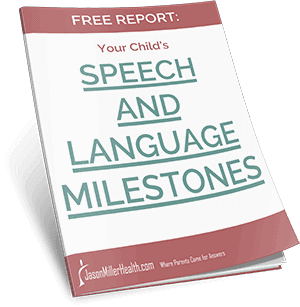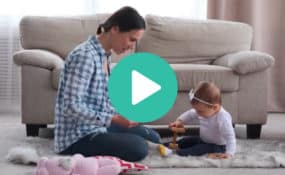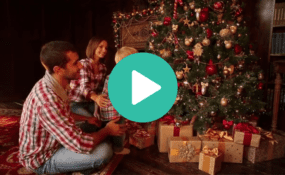Today, I want to talk to you about Echolalia. Many kids on the Autism spectrum, and sometimes children who are not on the spectrum, present this. While you may not have heard the name Echolalia, you have likely encountered it, especially if you have regular involvement with a developmentally delayed child or a child with special needs. Echolalia is a term that is used when a child repeats what you say without there being any function or purpose to it. A parent of a child who is speech delayed may be very excited to hear their child repeating words back to them. However, parents of these children often become discouraged when they realize that their child doesn’t understand what they are saying, and doesn’t appear to know the meaning of the words being spoken.
It often starts with parents labeling various objects such as animals or vehicles. For example, a parent will say “cow” and the child will say “cow” right back. The parent notices that when he or she names any object, the child will say it right back. Sometimes, the child may pick up phrases and say them. “Here we go! or “Time to eat” and use them constantly, however, often without any type of purpose. It’s then that parents realize, that their child doesn’t really understand the meaning of the phrases they are saying.
There are various approaches with which speech therapists address Echolalia, and the advice they give to parents often varies. Some say to extinguish it because it’s not purposeful speech. Some will encourage it because it is “speech”, and the words were learned in an appropriate context.
I try to do a little of both. I find that the process is easier this way, although quite a bit of patience is required. In order to address Echolalia and progress it into to meaningful speech, you will need two different pictures of the same object. For example, two different drawings of a cow. In addition, I use music and video for kids who like music.
I like using the classic “Old MacDonald Had a Farm.” I have a book and a video of the song. I begin with the song. I let the song play until we get to “cow.” I stop it and point to the cow and say “cow.” A child with echolalia will typically look at it and say “cow”, repeating what they just heard me say.
Next, I take an Old MacDonald book, and turn to the page that has the picture of the cow. All I do, is simply point to the picture of the cow. I don’t say the word “cow” because then the child would just be repeating it. The goal is to get the child to verbally label the other picture of the cow his or herself.
I’m not afraid of silence, so I wait. If the child doesn’t say anything, I go back to the original picture of a cow and say “cow” again. Then, I return to the book and point and wait. Waiting is the key! I give it about 10 seconds before I tell them the word.
The goal is to link the word not just with the object, but with various forms of the object. Try this at home. However, don’t spend ages waiting for the child to say the desired word. Cue it and move on. Do it as long as they show interest, using several different animals. You want it to be enjoyable!
Don’t turn it into therapy!
Don’t be surprised or discouraged if your child doesn’t get it the first time. Time and consistency are needed for this approach to work. Once the child does get it, you’re onto something and you’ve got more work to do!
I hope this helps. Remember each child is different and this strategy might not work for every child. My goal was to share a strategy with you, that works well for me, as I work with many different types of children to correct this problem. If you have any questions for me I encourage you to reach out to me. Thanks!
- Echolalia: What Is It? How to Work With It - June 14, 2018
- Echolalia: What Is It? How to Work With It - June 14, 2018
- Echolalia: What Is It? How to Work With It - June 14, 2018







